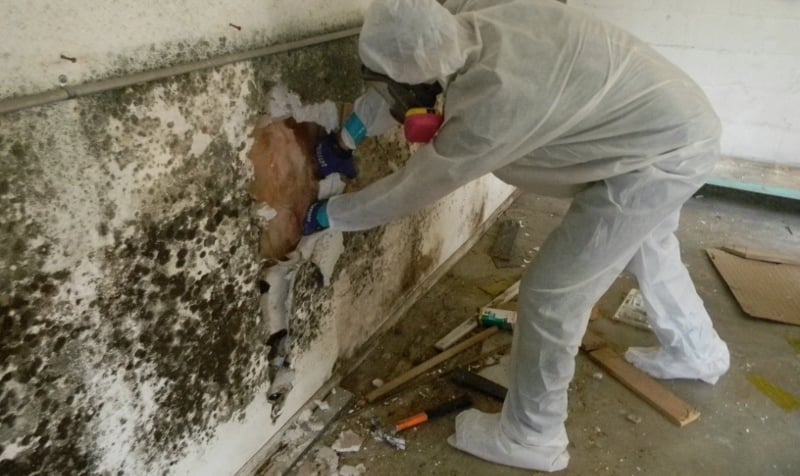Table of Contents

Mold can be a serious problem for homeowners, especially in areas with high humidity like Miami. Not only can mold damage your property, but it can also pose significant health risks to you and your family. To effectively deal with mold, it’s crucial to understand the mold remediation process. This comprehensive guide will take you through each step, ensuring you know what to expect and how to achieve the best results.
What is Mold Remediation?
Mold remediation is the process of removing mold and restoring a home to its pre-mold condition. It involves identifying the source of moisture, eliminating the mold, and taking steps to prevent future mold growth. Effective mold remediation requires specialized knowledge, tools, and techniques to ensure the safety of the property and its occupants.
Step 1: Mold Inspection and Assessment
The first step in the mold remediation process is a thorough inspection and assessment. Professional mold remediation experts will:
- Identify Moisture Sources: Mold needs moisture to grow, so finding and addressing the source of moisture is crucial.
- Inspect for Mold: Using specialized tools and techniques, professionals will locate mold colonies, even those hidden behind walls or under flooring.
- Assess the Damage: The extent of mold contamination will be evaluated to determine the best course of action.
Step 2: Containment
Once the mold has been identified, the next step in the mold remediation process is containment. This involves:
- Isolating Affected Areas: Containment barriers, such as plastic sheeting and negative air pressure machines, are used to prevent mold spores from spreading to other areas of the home.
- Turning Off HVAC Systems: To prevent the spread of spores through the air, HVAC systems are often turned off during the mold remediation process.
Step 3: Air Filtration
Air filtration is a critical part of the mold remediation process. High-Efficiency Particulate Air (HEPA) filters and other specialized equipment are used to:
- Remove Mold Spores from the Air: HEPA filters trap mold spores, reducing their concentration in the air.
- Improve Air Quality: Air scrubbers and negative air machines work to clean the air, making the environment safer for workers and occupants.
Step 4: Mold Removal

The actual mold removal process involves:
- Removing Contaminated Materials: Porous materials like drywall, insulation, and carpeting that are heavily infested with mold must be removed and properly disposed of.
- Cleaning and Sanitizing: Non-porous and semi-porous materials, such as glass, metal, and certain types of wood, can often be cleaned and sanitized using antimicrobial treatments.
- Vacuuming: HEPA vacuums are used to remove mold spores from surfaces and the air.
Step 5: Cleaning and Disinfecting
After mold removal, the next step in the mold remediation process is thorough cleaning and disinfecting:
- Scrubbing Surfaces: Surfaces are scrubbed with special cleaning agents designed to kill mold spores.
- Disinfecting: Disinfectants are applied to kill any remaining mold spores and prevent future growth.
- Deodorizing: Odor removal techniques are used to eliminate musty mold odors from the affected areas.
Step 6: Restoration
The final step in the mold remediation process is restoration. This involves:
- Repairing Damaged Areas: Replacing drywall, flooring, and other materials that were removed during mold remediation.
- Painting and Finishing: Once repairs are complete, surfaces may need to be repainted or refinished to restore the area to its original condition.
- Preventative Measures: Installing moisture control solutions like dehumidifiers or improved ventilation to prevent future mold growth.
Preventing Future Mold Growth
Effective mold remediation doesn’t stop at removing the current mold. Preventing future mold growth is crucial. Here are some tips:
- Control Humidity: Use dehumidifiers and air conditioners to keep indoor humidity levels below 60%.
- Fix Leaks Promptly: Address any leaks in roofs, walls, or plumbing immediately to prevent moisture buildup.
- Improve Ventilation: Ensure proper ventilation in areas prone to moisture, such as bathrooms, kitchens, and basements.
- Regular Inspections: Schedule regular inspections with mold remediation professionals to catch and address any mold issues early.
Conclusion
Understanding the mold remediation process is essential for effectively dealing with mold in your home. From inspection and containment to removal and restoration, each step is crucial for ensuring your home is mold-free and safe. By following this step-by-step guide and taking preventative measures, you can protect your property and health from the dangers of mold.
If you suspect mold in your home, don’t wait. Contact us today on +1 305 894-4343 to ensure a thorough and effective solution. Our service areas include Miami, Coral Gables, Kendall, or any part of South Florida.



 PuroClean of Coral Gables
PuroClean of Coral Gables